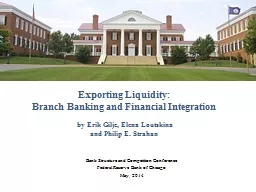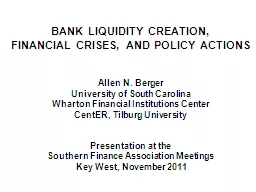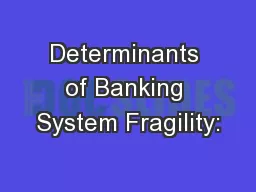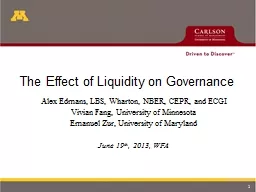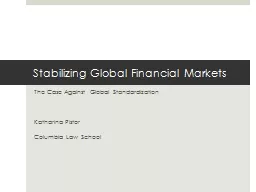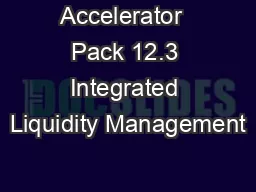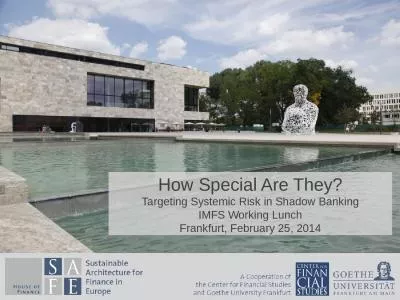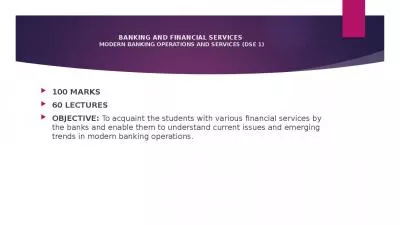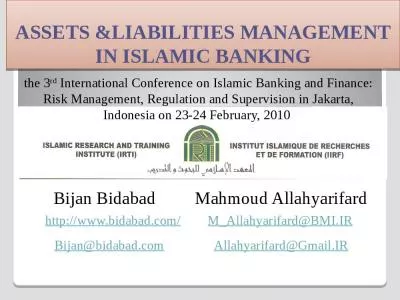PPT-Exporting Liquidity: Branch Banking and Financial Integration
Author : alexa-scheidler | Published Date : 2018-10-29
by Erik Gilje Elena Loutskina and Philip E Strahan Bank Structure and Competition Conference Federal Reserve Bank of Chicago May 2014 Key Change Integrating US
Presentation Embed Code
Download Presentation
Download Presentation The PPT/PDF document "Exporting Liquidity: Branch Banking and ..." is the property of its rightful owner. Permission is granted to download and print the materials on this website for personal, non-commercial use only, and to display it on your personal computer provided you do not modify the materials and that you retain all copyright notices contained in the materials. By downloading content from our website, you accept the terms of this agreement.
Exporting Liquidity: Branch Banking and Financial Integration: Transcript
Download Rules Of Document
"Exporting Liquidity: Branch Banking and Financial Integration"The content belongs to its owner. You may download and print it for personal use, without modification, and keep all copyright notices. By downloading, you agree to these terms.
Related Documents

